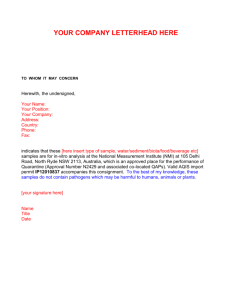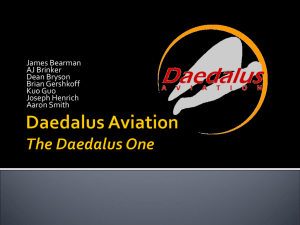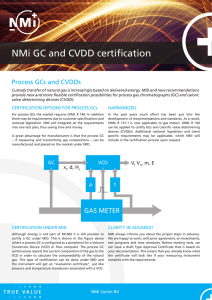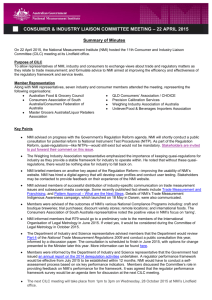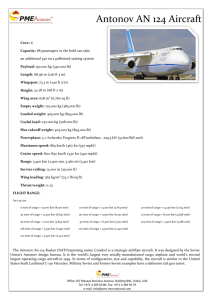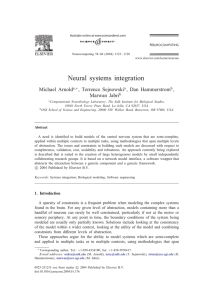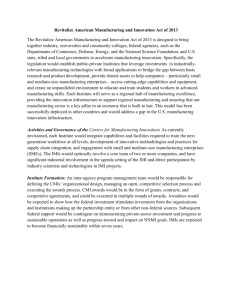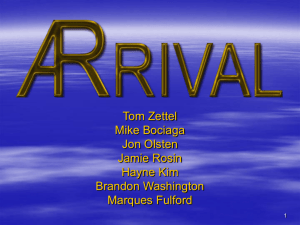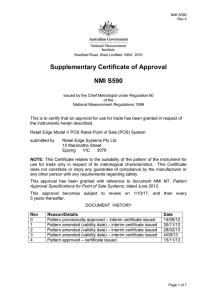SRR Presentation (Feb 3 2011)
advertisement
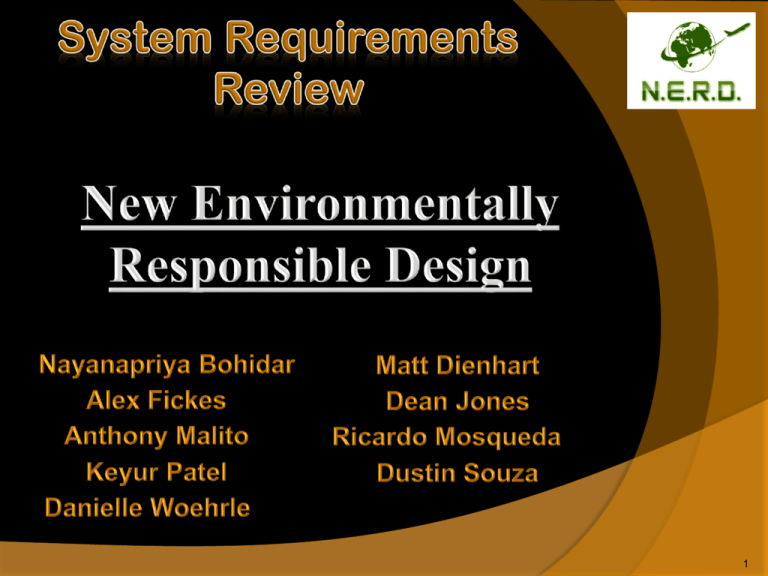
1 Mission Statement Market Competition Concept of Operations Design Requirements Design Comparison New Technologies and Advanced Concepts Sizing Code Summary 2 To design an environmentally responsible aircraft for the twin aisle commercial transport market with a capacity of 300+ passengers, NASA’s N+2 capabilities, and an entry date of 2020-2025. NASA’s N+2 technology benefits include: Reducing cumulative noise by 42dB below Stage 4 Reducing take-off and landing NOx emissions to 75% below CAEP6 levels Reducing fuel burn by 50% relative to “large twin-aisle performance” (777-200LR) Reducing field length by 50% relative to the large twin-aisle 3 Twin-aisle aircraft represent the fastestgrowing market segment Growth fueled by emerging economies (Asia-Pacific, Latin America, Middle East, etc.) Image Source: Boeing Market Forecast 4 5 Asia-Pacific, Middle East, Latin America Low Cost Carriers (LCC’s) Passengers looking for cheap hub-to-hub and nonstop flights Airliners looking for high capacity aircraft to meet increasing market demand 6 High-Speed Rail Systems Map of proposed high-speed rail systems in China, along with estimated travel times from Beijing Image Source: www.hasea.com Boeing 737, Airbus A319 7 Operational City Pairs Runway Length (ft) Origin Destination Tokyo, Japan Seoul, South Korea Sydney, Australia Beijing, China Hong Kong, China Tokyo, Japan Sapporo, Japan Jeju, South Korea Melbourne, Australia Shanghai, China Taipei, Taiwan Naha, Japan Reference: Centre for Asia Pacific Aviation Origin Flight Time (Min) Route Destination Distance (nmi) 0.75 Mach 0.85 Mach 8,202 9,843 593.91 101.91 93.45 10,499 9,843 323.86 69.21 64.60 8,301 11,998 509.89 91.73 84.47 10,499 10,827 779.22 124.35 113.25 12,467 10,991 580.10 100.24 91.97 8,202 9,843 803.39 127.27 115.83 8 Design Mission 400 Passengers (Max Payload) 4,000 nmi Range (Tokyo-NHD to New Delhi-DEL: 3,200nmi) Runway Length 8,300 ft (Takeoff) 4000 nmi 200 nmi 9 Requirement Threshold Target Cruise Mach 0.75 0.85 Range 3,000 nmi 4,000 nmi Field Length 8,300 ft 5,800 ft Fuel Burn 33% reduction 50% reduction NOx Emissions 50% below CAEP 6 -32 dB (cum. below Stage 4) 350 75% below CAEP 6 -42 dB (cum. below Stage 4) 400 Noise Reduction Pax Capacity *Reference Vehicle B737-700 10 Requirement Target Design B767-300 B777-200 B737-700 Cruise Mach 0.85 0.85 0.84 0.785 Range 4,000 nmi 3,780 nmi 5,240 nmi 3,440 Field Length 5,800 ft. 7,907 ft. 8,202 ft. 8,300 ft. Pax Capacity 400 350 440 149 Reference: Boeing.com 11 PROPULSION Geared Turbofan Unducted Fan (UDF) Bio-Diesel AERODYNAMICS Trailing Edge Brushes Blended Wing Body Spiroid Winglets 12 DYNAMICS & CONTROLS Fly By Wireless Morphing Trailing Edge STRUCTURES Composites Bonded Skin Panels 13 We used three sizing codes: Simple – Incorporates design mission range, (L/D)max and number of passengers Initial – Incorporates all of the above in addition to T/W and W0/S ratios. MATLAB – Incorporates all of the above and the entire design mission (i.e. loiter time, emergency landing etc.) Boeing 767 - 200ER with CF6-80C2B7F engines: W 0 (Maximum Takeoff Gross Weight) [lb] W e (Empty Weight) [lb] W f (Fuel Weight) [lb] Airbus A330 - 200 with CF6-80E1A2 engines: W 0 (Maximum Takeoff Gross Weight) [lb] W e (Empty Weight) [lb] W f (Fuel Weight) [lb] Sizing codes used Simple Initial MATLAB Actual Calculated Error Calculated Error Calculated Error 395,000 383,375 -2.94% 389,861 -1.30% 546,580 38% 184,400 195,300 5.91% 202,484 9.81% 252,340 37% 122,275 121,576 243,550 Simple Initial MATLAB Actual Calculated Error Calculated Error Calculated Error 507,050 493,299 -2.71% 502,105 -0.98% 563,040 11% 263,075 241,182 -8.32% 256,006 -2.69% 259,480 -1% 176,216 170,198 245,840 14 Market forecasts predict a need for higher capacity aircraft to fly heavily trafficked routes 400 passenger, 4000 nmi range, N+2 compliant aircraft scheduled for deployment in 2020-2025 Next Steps Constraint Analysis Sizing code refinement Acquire Propulsion systems data Preliminary wing design 15
